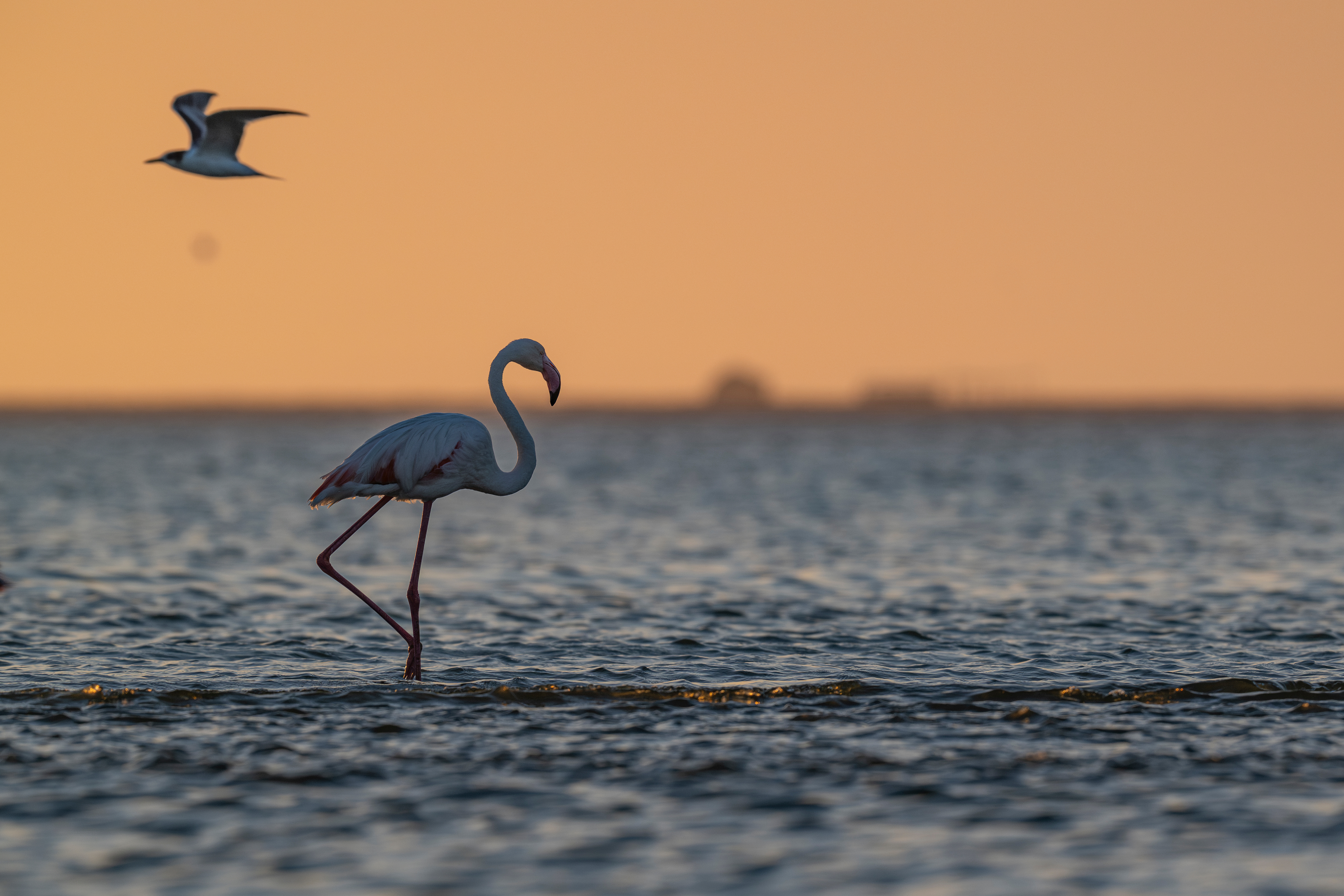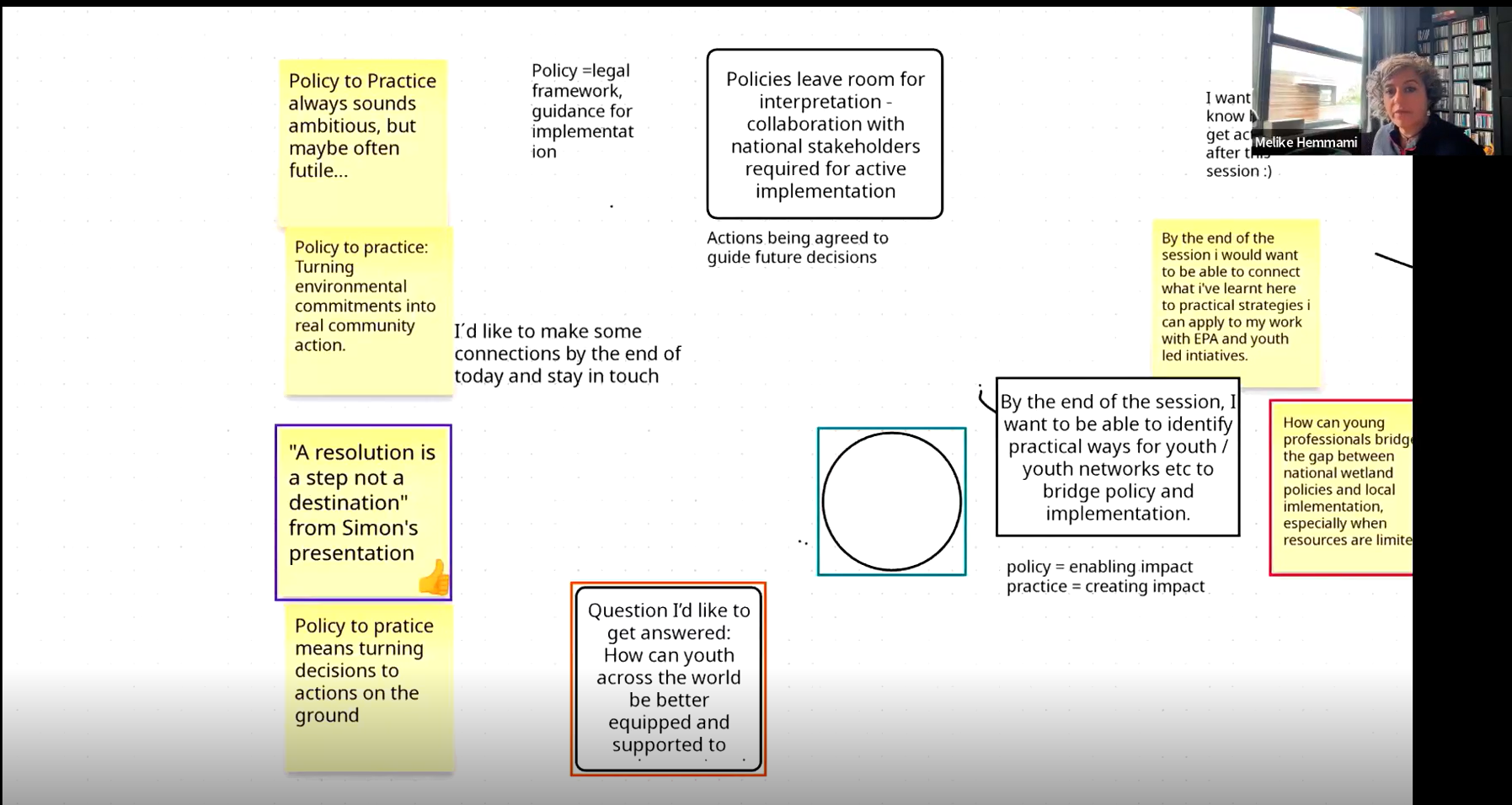From Policy to Practice: Youth Bringing Ramsar COP15 to Life Along the East Atlantic Flyway

Flamingo at sunset in a coastal wetland, a reminder that healthy wetlands sustain both wildlife and people along the East Atlantic Flyway. © Adobe Stock by Sebastien Barrio
As the dust settles over Victoria Falls, Zimbabwe, the echoes of Ramsar COP15, a gathering where the world promised once more to protect its wetlands, still hang in the air. Ministers, conservationists, researchers, educators, youth, and community leaders had spoken enthusiastically about restoration, resilience, and inclusion. The theme, “Protecting Wetlands for Our Common Future,” carried weight. Yet as the conference halls emptied, one thought lingered: What happens after the resolutions are done?
As one young delegate quietly said, “Commitments don’t save wetlands. People do.”
A reckoning for wetlands and a mandate for people
COP15 was more than a conference; it was a reckoning. Wetlands, the arteries of our planet, are vanishing three times faster than forests. Every lost marsh or mudflat erodes climate resilience, biodiversity, and the livelihoods of communities that depend on healthy ecosystems.
In Zimbabwe, Parties adopted several key COP15 Resolutions that shaped our Flyway discussions, the Youth Empowerment and Integration Resolution (Resolution XV.19), the Flyways and Critical Sites Resolution (Resolution XV.16), the CEPA “People and Wetlands” Programme (Resolution XV.6), and the Resolution on Sustainable Livelihoods (Resolution XV.20). Together, these decisions emphasise that protecting wetlands means empowering people, especially youth and local communities, to connect conservation, livelihoods, and education across the East Atlantic Flyway.
However, the truest reminder of the urgent need to act lies not in the documents adopted in Zimbabwe, but in the skies above, in the wings of the migratory birds that journey each year along the East Atlantic Flyway. Their paths, from the Arctic tundra to Africa’s mangroves, tell the story of the planet’s wetlands: where wetlands thrive, the chorus of the birds lets us know; where wetlands vanish, their silence speaks volumes.
The Forum where policy learned to land
Months later, the East Atlantic Flyway Youth Forum became one of the real-world spaces where these COP15 commitments found their wings. Organised by the Common Wadden Sea Secretariat (CWSS), Migratory Birds for People (MBP), and Youth Engaged in Wetlands (YEW), it brought together young conservationists (18–30) from coastal countries along the Flyway. The theme, “From Policy to Practice: Bringing the Ramsar COP to Life” wasn’t a slogan; it was a brief.
We started by grounding ourselves in Ramsar’s role along the Flyway and what the COP15 outcomes meant for us, the Youth Resolution that affirmed youth as partners in implementation and not simple observers, the Flyway Resolution strengthening cross-border collaboration, the CEPA “People and Wetlands” Programme, and the Resolution on Sustainable Livelihoods linking conservation to community well-being. From there, youth voices took over: stories from Ramsar Sites along the Flyway, Youth Focal Points sharing how they entered policy spaces, and honest discussions about where national implementation still needs more youth energy. In many ways, the Forum became a live demonstration of those resolutions in practice, youth translating global commitments into local action.
Dream. Map. Act. The session that moved us
On Day 2, the training “Policy to Practice: Dream, Map, Act” did exactly what its title promised. First, we dreamed: if anything were possible, what would we do for our local wetlands and biodiversity? Then we mapped: who are the stakeholders (from site managers to fishers, from schools to local councils)? Where do policy and practice meet (CEPA actions, advocacy, monitoring)? And finally, we brainstormed on how to act: small steps, from setting up youth-led CEPA campaigns for World Wetlands Day, to shorebird counts feeding national reports, to co-creating marine litter campaigns and advocating for more Ramsar Youth Focal Points.
That session felt like CEPA in motion: communication to inspire, education to equip, participation to connect, and awareness to sustain activities all anchored in migratory bird and wetland conservation. This momentum didn’t begin here; it’s been building for years through local partnerships and coordinated efforts along the East Atlantic Flyway. The annual waterbird counts involving more than 13,000 observers across 33 countries are one powerful example of CEPA in action, turning collaboration and training into the kind of data that guide national Ramsar reports and conservation priorities. The next step is clear: to bring more youth into these initiatives, not just as participants, but as leaders in monitoring, communication, and community engagement across the Flyway.

Facing the headwinds
Our conversations weren’t all celebratory. Across breakout rooms, youth were candid about the headwinds they face in translating commitments into daily action, from limited funding and short project cycles to bureaucratic hurdles and limited opportunities for youth participation.
Yet these barriers didn’t silence optimism; they sharpened it. Participants exchanged ideas for joint advocacy and cross-country mentorships, proving that even small, well-coordinated actions can keep the Flyway’s momentum alive.
The moment that stayed with me came when Thandeka Ndlela (Ramsar Youth Focal Point, Eswatini) shared:
“The East Atlantic Flyway is more than a migratory path; it’s a living thread connecting wetlands, wildlife, and people from the Arctic to Africa. It’s also a corridor of opportunity for youth, a space for connection, knowledge exchange, and collective action. We’re not waiting to be invited; we’re already working. What we need now is recognition, resources, and trust.”
Moritz Röhlke, Ramsar Youth Focal Point for Germany, echoed this from the European stretch of the Flyway:
“Wetlands protect us from droughts and floods and are crucial for ensuring a viable future on our planet. We, as the young people of today, will experience this future, so our input in shaping it is vital!”
Together, their words captured what the Flyway truly represents: a shared responsibility stretching across continents, where youth are not just participants but co-pilots in conservation.
What the birds teach us about implementation
Migratory birds are our most honest reviewers. They cross jurisdictions without noticing our borders; their survival depends on a chain of functioning wetlands. If any link fails, the journey fails. That’s implementation in a nutshell.
Youth involvement matters because the decisions made today will shape the wetlands, flyways, and communities we inherit tomorrow. We are the generation that will live with the outcomes of current choices and the one with the energy, creativity, and networks to turn commitments into results. When young people are part of implementation, policies gain life: outreach becomes education, data becomes action, and global goals become local impact. That’s how policy truly learns to land.
A programme, not a one-off
This East Atlantic Flyway Youth forum is part of a long-term programme. Previous years focused on project design & fundraising (2022), conservation storytelling (2023) and citizen science (2024); 2025 focused on policy implementation skills, stakeholder mapping, advocacy basics, and CEPA toolkits. The continuity is the point: to move youth from consultation to co-decision-making and from ideas to measurable outcomes in Ramsar reporting cycles.
Synergy, not silos
Another thread we pulled at: synergy with AEWA and other MEAs. COP15 outcomes, revised guidance, and stronger governance directly support flyway-scale conservation. When youth strengthen a Ramsar Site’s CEPA plan or co-design a monitoring activity, they are also serving AEWA objectives and national biodiversity targets. That’s the Flyway advantage: one action, multiple wins.
Taking flight with youth at the helm
As our final session faded from the screen, I pictured spoonbills lifting off at dawn; a cloud of purpose moving as one. That is what this Forum felt like: evidence-based, community-rooted, and youth-led.
I thought back to Zimbabwe and that whisper: “Commitments don’t save wetlands. People do.” And I heard Kristine’s reminder echo through the Flyway’s wind: These policies can only turn into practice when youth are at the helm.
From policy to practice, from the Arctic to Africa, we’re flying alongside the birds and keeping the chain of wetlands unbroken.
